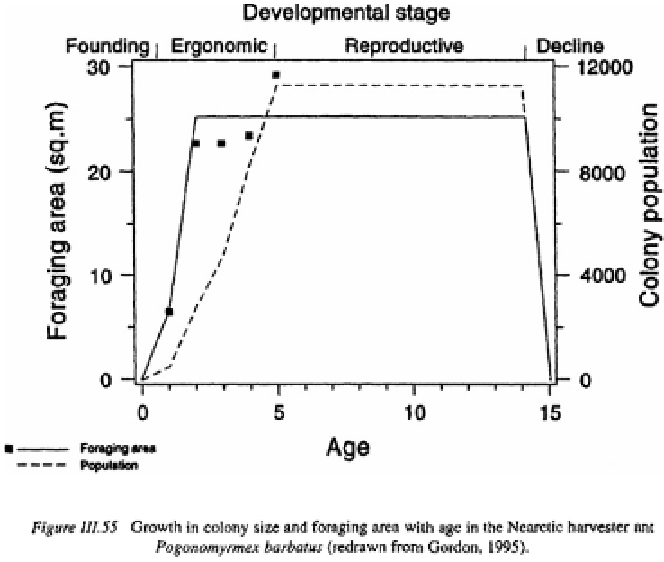Agriculture Reference
In-Depth Information
are also produced. Winged queens and males are liberated from the maternal nest at
characteristic times of year for each species, the proximal cue often being an environ-
mental event such as a rainstorm. However, not all colonies produce queens in all years
and individual colonies may not produce individuals of both sexes in any one year.
Colonies may live for considerable periods although this is only related to the longevity
of the original queen in those species where queens are not replaced. Queens of many
species (
Myrmica, Formica, Lasius
) have been shown to live for more than 20 years
(Baroni-Urbani
et al.,
1978) although life spans for many others are considerably
less and a few species may live for longer periods (Hölldobler and Wilson, 1990).
The time scale of colony ontogeny is illustrated by that of the Nearctic seed-harvesting
ant
Pogonomyrmex barbatus
(Gordon, 1995; Gordon and Kulig, 1996) (Figure III.55).
Mating takes place in mid-summer with the release of the winged forms. Following
mating, the males die and the females drop their wings and dig a nesting hole within
which they remain sealed until the first workers emerge to forage on the surface, some
10 weeks later. Colonies grow steadily reaching
ca.
3000 workers at 2 years, 4000-8000
at 3-4 years and reach maturity at about 5 years with the release of the first reproduc-
tives. Thereafter, mature colonies maintain a stable size of 10,000 to 12,000 workers.
The colony dies after 15 to 20 years since dead queens are not replaced in this species.

